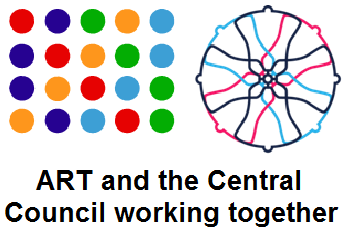Zoom breakout rooms
The breakout room feature of Zoom can be used to enhance and organise practices using Ringing Room, virtual training days and even social events.
Holding multiple practices
Popular online ringing practices can attract thirty or more attendees, and even though the session may run for two or more hours this is too many for a single practice. This is where breakout rooms can help, allowing you to run more than one practice in parallel, even swapping people between practices if required. Depending on how you configure your towers, this can provide a natural progression for people from one tower to the next over time, whilst experienced ringers can have their own practice and have a chance to ring something they find challenging, maybe only for part of the practice.Taking away the physical constraints of travel, difficultly of bells and (through using Wheatley) even ringer numbers, you can let your imagination run riot, providing a better learning and ringing experience for everyone.
The main practice can be split into a number of towers by:
- Using two or more Ringing Room towers
- Setting up the Zoom meeting with an equivalent number of breakout rooms
The exact configuration of the Ringing Room towers will depend on the needs of the practice. You could have:
- 6-bell, 8-bell and a 10-bell towers
- General practice and special methods
- Basic, intermediate and advanced
- You can use Wheatley, in one or more towers as extra helpers or experienced ringers
Participants are encouraged to sign in to a particular tower in Ringing Room before joining the Zoom meeting.
The role of the organiser
Multiple towers work best if someone is prepared to forego ringing for some of the time, and stay in the main room to welcome and shepherd people to the right place.
At the start, the organiser should have all three towers open on their screen so that they can see who is going where. They should aim to open the Zoom meeting about fifteen minutes before the advertised time and as people join the Zoom meeting, they should be assigned to the corresponding breakout room.
It's probably best if each tower is run by the same people each week, though, if one of them is away, normally someone else is always willing and able to step in. The people running each tower should be given co-hosting rights before opening the breakout rooms. This enables them to allocate bells, mute all, and to move into another breakout room to find the organiser, if necessary.
Once enough people have arrived to make the practices viable including the co-hosts, press the Open Breakout Rooms button. Most people will then follow the link to join their breakout room. Occasionally, new people have difficulty with this. Usually they can't find the join link. This is usually found under one of the menu options at the bottom of Zoom.
As organiser, it is best to stay in the outer room for a period of time, waiting for late arrivals or to help those people who lose their Internet connection and need to log back into the Zoom call. You might want to give help via Facebook Messenger to someone who has gone into Ringing Room and doesn't realise they need to join Zoom as well. Ringing Room chat can also be a good place to communicate with people who are stuck getting into Zoom. Joining one of the practices too early means you may keep having to leave to let people in, which is very disruptive to the practice. Even then, it is worthwhile keeping an eye out in case someone arrives very late. A suggested protocol is for anyone arriving late to check the Ringing Rooms to see which tower the organiser is in and leave a message there on the chat.
At the end, people can quit the breakout room and meet in the main practice to have a chat.
It can also be helpful to set up a breakout room on the fly, if more people than expected turn up for a practice. If this is done, it is important to appoint an experienced ringer to lead the breakout group, and, also, not to make anyone feel as if they are being turned away from the main practice.
Mentoring or standing behind
Breakout rooms can be extremely helpful when a ringer needs a lot of help from someone ‘standing behind.’ If the learner and helper both go into a separate room for the duration of a piece of ringing, then the helper can talk freely without disturbing the rest of the band. Such one-on-one coaching provides both privacy and confidentiality. Wouldn't it be good to be able to do that at in the physical tower?
The ringing in this case needs to be controlled by the Ringing Room keys, rather than someone calling, of course, otherwise those in the breakout room won’t hear it! The learner can indicate they are ready to go by doing a whole pull of their bell in the Ringing Room.
Social uses
The recent Cumberland's online quiz used breakout rooms successfully. People were allocated to different breakout rooms for each round of the quiz, so that everyone met everyone else during the evening. A great way of getting to know new people. A principle that could be used in lots of other online events ...

What are breakout rooms?
Breakout rooms allow you to split your Zoom meeting in up to 50 separate
sessions. The meeting host can choose to split the participants of the
meeting into these separate sessions automatically or manually, or they
can allow participants to select and enter breakout sessions as they
please. The host can switch between sessions at any time.